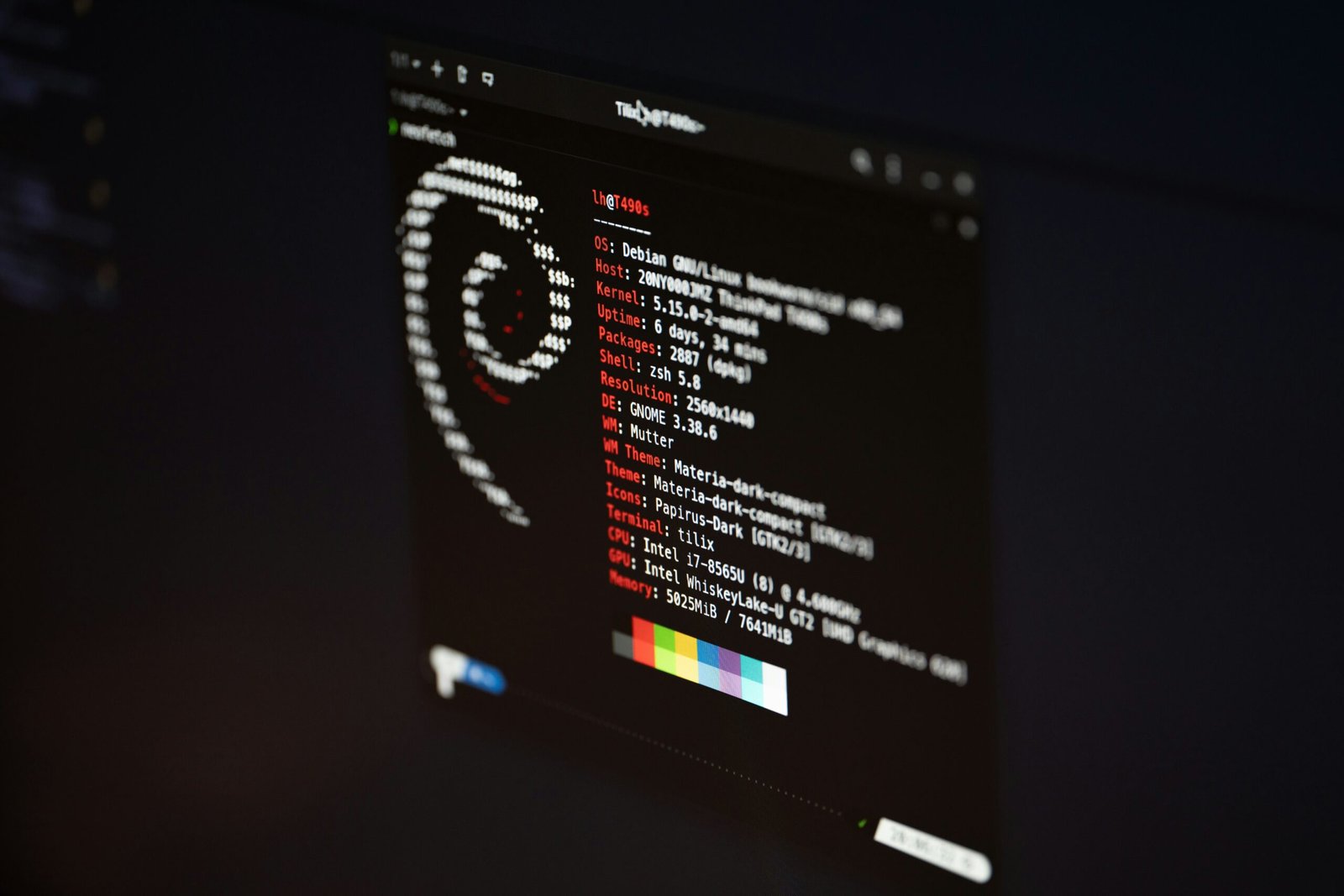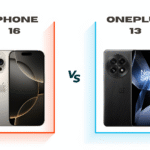Best Linux Distros for Windows Users Ready to Make the Switch
Table Of Content
- Best Linux Distros for Windows Users
- Linux Distro Tier List
- UUbuntu
- MLinux Mint
- ZZorin OS
- PPop!_OS
- FFedora
- LLubuntu
- XXfce Distros
- In-Depth Distro Analysis
- Ubuntu
- Why Choose Ubuntu?
- Windows Transition Features
- Technical Specifications
- Pros & Cons
- Advantages
- Limitations
- Linux Mint
- Why Choose Linux Mint?
- Windows Transition Features
- Technical Specifications
- Pros & Cons
- Advantages
- Limitations
- Zorin OS
- Why Choose Zorin OS?
- Windows Transition Features
- Technical Specifications
- Pros & Cons
- Advantages
- Limitations
- Pop!_OS
- Why Choose Pop!_OS?
- Windows Transition Features
- Technical Specifications
- Pros & Cons
- Advantages
- Limitations
- Fedora
- Why Choose Fedora?
- Windows Transition Features
- Technical Specifications
- Pros & Cons
- Advantages
- Limitations
- Lubuntu
- Why Choose Lubuntu?
- Windows Transition Features
- Technical Specifications
- Pros & Cons
- Advantages
- Limitations
- Xfce Distros
- Why Choose Xfce?
- Windows Transition Features
- Technical Specifications
- Pros & Cons
- Advantages
- Limitations
- Ultimate Linux Distribution Comparison Guide
Best Linux Distros for Windows Users
Linux Distro Tier List
Ranked by ease of use, Windows similarity, and performance
Ubuntu
Perfect balance of user-friendliness and powerful features
Windows Similarity: ⭐⭐⭐⭐☆
Linux Mint
Familiar desktop experience with excellent hardware support
Windows Similarity: ⭐⭐⭐⭐⭐
Zorin OS
Windows-like interface with theme customization options
Windows Similarity: ⭐⭐⭐⭐⭐
Pop!_OS
Optimized for productivity with tiling window manager
Windows Similarity: ⭐⭐⭐☆☆
Fedora
Cutting-edge features with strong security focus
Windows Similarity: ⭐⭐☆☆☆
Lubuntu
Minimal resource usage for older machines
RAM Requirement: 512MB+
Xfce Distros
Lightweight yet functional desktop experience
RAM Requirement: 1GB+
In-Depth Distro Analysis
Detailed breakdown of the best Linux distributions for Windows switchers
Ubuntu
The gateway to Linux for millions of users worldwide
Why Choose Ubuntu?
Ubuntu stands as the most popular Linux distribution, particularly for those transitioning from Windows. Its development is led by Canonical, providing a stable and well-supported platform. The GNOME desktop environment offers a clean, modern interface that balances simplicity with customization potential.
Windows Transition Features
- Familiar Application Menu: Similar start menu experience with categorized applications
- Driver Management: Automatic hardware driver detection and installation
- Software Center: Intuitive app store with thousands of free applications
- Taskbar Layout: Dock-style launcher with system tray equivalents
Technical Specifications
| Default Desktop | GNOME with Ubuntu modifications |
| Package Manager | APT (Debian-based) |
| Release Cycle | 6-month interim releases + 2-year LTS versions |
| Minimum Requirements | 2GHz dual-core, 4GB RAM, 25GB storage |
Pros & Cons
Advantages
- Massive community support and documentation
- Excellent hardware compatibility out-of-the-box
- Regular security updates and long-term support options
- Wide software availability through repositories
Limitations
- Snap packages sometimes launch slower than native apps
- Default GNOME interface differs significantly from Windows
- Recent versions have increased system requirements
Best For: First-time Linux users, developers, and those who value stability
Transition Difficulty: Low
Download UbuntuLinux Mint
The most Windows-like experience available
Why Choose Linux Mint?
Linux Mint provides the most familiar environment for Windows refugees. Based on Ubuntu but with a more traditional desktop metaphor, its Cinnamon desktop offers an experience that immediately feels like home to Windows users. The development team prioritizes user-friendliness and includes numerous quality-of-life improvements.
Windows Transition Features
- Start Menu: Nearly identical to Windows 7-style menu
- Desktop Icons: Traditional desktop icon support
- System Tray: Familiar notification area with clock and system icons
- Control Panel: Centralized system settings similar to Windows
Technical Specifications
| Default Desktop | Cinnamon (MATE and Xfce editions available) |
| Package Manager | APT with Mint-specific tools |
| Release Cycle | Follows Ubuntu LTS with incremental updates |
| Minimum Requirements | 2GB RAM, 20GB storage (Cinnamon edition) |
Pros & Cons
Advantages
- Most Windows-like interface available
- Includes proprietary media codecs by default
- Exceptional update management with safety levels
- Timeshift system restore utility pre-installed
Limitations
- Slightly less modern looking than some alternatives
- Occasionally lags behind Ubuntu in driver support
- Limited official documentation compared to Ubuntu
Best For: Users wanting seamless transition, older hardware, and traditional desktop users
Transition Difficulty: Very Low
Download Linux MintZorin OS
The perfect Windows alternative with unmatched familiarity
Why Choose Zorin OS?
Specifically designed as a transition platform for Windows migrants, Zorin OS delivers the most familiar computing experience in the Linux ecosystem. Built on Ubuntu’s LTS foundation, it combines stability with thoughtful Windows-like design elements that significantly reduce the learning curve for new Linux users.
Windows Transition Features
- Layout Changer: Instantly switch between Windows 11, Windows 7, macOS, or Ubuntu desktop layouts
- Native Windows App Support: Pre-configured Wine and PlayOnLinux for running .exe files
- Start Menu Alternative: Windows-style application menu with categorized programs
- Zorin Connect: Seamless phone integration (notifications, file sharing, device control)
- Driver Management: Automatic proprietary driver installation for Nvidia/AMD GPUs
Technical Specifications
| Based On | Ubuntu LTS |
| Desktop Environment | Zorin Desktop (GNOME-based) |
| Package Manager | APT with GUI Software Store |
| Release Cycle | Follows Ubuntu LTS (2-3 years) |
| Minimum Requirements | 1GHz dual-core, 2GB RAM, 15GB storage |
Pros & Cons
Advantages
- Most Windows-like interface available
- Exceptional theme customization options
- Pre-installed with essential codecs and software
- Excellent hardware detection and driver support
- Beginner-friendly installation process
Limitations
- Premium themes require paid upgrade
- Less cutting-edge than other distros
- Limited gaming optimization compared to Pop!_OS
- Heavier resource usage than lightweight distros
Best For: Windows users wanting a familiar interface, designers, and general users
Transition Difficulty: Very Low
Download Zorin OSPop!_OS
Productivity-focused distro for creators and developers
Why Choose Pop!_OS?
Developed by System76, Pop!_OS targets users who prioritize productivity and performance. Built on Ubuntu but with significant enhancements, it offers a polished experience with powerful window management, excellent graphics support, and workflow optimization tools that appeal to developers and creative professionals.
Windows Transition Features
- Auto-Tiling: Intelligent window management inspired by tiling WMs
- Workspace Management: Fluid workspace navigation and organization
- Keyboard Navigation: Extensive keyboard shortcuts for power users
- Graphics Switching: Seamless GPU switching for hybrid graphics laptops
- Recovery Partition: Built-in system recovery options
Technical Specifications
| Based On | Ubuntu |
| Desktop Environment | GNOME with Pop Shell |
| Package Manager | APT with Pop!_Shop |
| Release Cycle | 6-month release cycle with 9-month support |
| Minimum Requirements | 2GHz dual-core, 4GB RAM, 20GB storage |
Pros & Cons
Advantages
- Best-in-class NVIDIA graphics support
- Excellent workflow automation features
- Modern, visually appealing interface
- Strong focus on developer tools
- Integrated encryption options
Limitations
- Interface differs significantly from Windows
- Steeper learning curve for new Linux users
- Limited customization compared to KDE-based distros
- Heavier resource consumption
Best For: Developers, power users, and those with NVIDIA graphics
Transition Difficulty: Moderate
Download Pop!_OSFedora
Cutting-edge technology with strong corporate backing
Why Choose Fedora?
Fedora serves as the community testing ground for Red Hat Enterprise Linux, featuring the latest innovations in the Linux ecosystem. It’s renowned for its commitment to open-source principles and security. The GNOME desktop implementation is arguably the purest and most polished available.
Windows Transition Features
- Windows Subsystem: Best support for WSL interoperability
- Powerful Terminal: Enhanced command line experience
- Virtualization: Best-in-class KVM/QEMU virtualization support
- Enterprise Features: SELinux security enabled by default
Technical Specifications
| Default Desktop | Vanilla GNOME |
| Package Manager | DNF (RPM-based) |
| Release Cycle | 6-month release cycle with 13-month support |
| Minimum Requirements | 2GHz dual-core, 4GB RAM, 20GB storage |
Pros & Cons
Advantages
- Features latest kernel and software versions
- Exceptional developer and container support
- Strong security with SELinux enforcement
- Corporate backing from Red Hat
Limitations
- No proprietary media codecs included by default
- Shorter support lifecycle than Ubuntu LTS
- NVIDIA driver installation requires extra steps
Best For: Developers, tech enthusiasts, and those wanting latest software
Transition Difficulty: Moderate
Download FedoraLubuntu
Lightweight solution for older hardware
Why Choose Lubuntu?
Lubuntu is designed specifically for older or less powerful hardware. Using the lightweight LXQt desktop environment, it provides a functional computing experience while consuming minimal system resources. Based on Ubuntu, it maintains compatibility with Ubuntu repositories while being gentle on hardware.
Windows Transition Features
- Traditional Desktop: Familiar desktop metaphor with taskbar and system tray
- Low Resource Usage: Runs smoothly on decade-old hardware
- Simple Interface: Clean, uncluttered desktop environment
- Compatibility: Access to Ubuntu’s vast software repositories
Technical Specifications
| Based On | Ubuntu LTS |
| Desktop Environment | LXQt |
| Package Manager | APT with Discover Software Center |
| Release Cycle | Follows Ubuntu LTS |
| Minimum Requirements | Pentium 4 or Athlon 64, 512MB RAM, 8GB storage |
Pros & Cons
Advantages
- Extremely lightweight and fast
- Excellent for reviving old computers
- Simple, straightforward interface
- Low power consumption
Limitations
- Less visually appealing than modern desktops
- Limited customization options
- Fewer pre-installed applications
- Not ideal for gaming or resource-intensive tasks
Best For: Older hardware, low-spec machines, and minimalists
Transition Difficulty: Moderate
Download LubuntuXfce Distros
Lightweight yet functional desktop experience
Why Choose Xfce?
Xfce is a lightweight desktop environment that strikes a balance between resource efficiency and functionality. Used in distributions like Xubuntu and MX Linux, it provides a traditional desktop experience that’s both familiar to Windows users and easy on system resources.
Windows Transition Features
- Traditional Layout: Taskbar, start menu, and system tray similar to Windows
- Customization: Extensive theming and configuration options
- Performance: Smooth operation on mid-range hardware
- Stability: Mature codebase with excellent reliability
Technical Specifications
| Desktop Environment | Xfce |
| Resource Usage | Low memory footprint (300-500MB on idle) |
| Popular Distros | Xubuntu, MX Linux, Manjaro Xfce |
| Minimum Requirements | 1GHz processor, 1GB RAM, 10GB storage |
Pros & Cons
Advantages
- Excellent balance of features and performance
- Highly customizable interface
- Stable and reliable with minimal bugs
- Good community support
Limitations
- Visual design feels somewhat dated
- Some configuration requires manual editing
- Less modern features than GNOME/KDE
Best For: Mid-range hardware, users wanting balance of features and performance
Transition Difficulty: Moderate
Download XubuntuBest Linux Distros for Windows 11 Users
Ultimate Linux Distribution Comparison Guide
Find the best Linux distro for Windows 11 users making the switch to Linux. Our comprehensive guide compares Ubuntu, Linux Mint, Zorin OS, Pop!_OS, Fedora, Lubuntu and Xfce distros for Windows refugees. Discover which Linux distribution offers the easiest transition from Windows 11 to Linux with our detailed analysis of user-friendly Linux alternatives.
Compare Linux distros for beginners transitioning from Windows 11 to Linux. We evaluate Linux distributions based on Windows similarity, ease of use, system requirements, gaming support, and hardware compatibility. Find the perfect Linux OS replacement for Windows 11 with our expert recommendations.
Looking for Windows-like Linux distros? Our guide covers Linux Mint Cinnamon desktop, Zorin OS Windows-like interface, Ubuntu for beginners, and lightweight Linux options like Lubuntu. Learn how to switch from Windows 11 to Linux with minimal learning curve using our Linux migration guide for Windows users.
Explore the best Linux distros for gaming like Pop!_OS, productivity-focused Linux distributions, and lightweight Linux OS for older hardware. Our Linux vs Windows comparison helps you choose between Ubuntu-based distros, Fedora Workstation, and other top Linux alternatives to Windows 11.
Linux for Windows users guide: Discover which free and open source operating system works best as a Windows 11 replacement. We cover Linux desktop environments including GNOME, KDE Plasma, Xfce, and LXQt to help you find the most user-friendly Linux experience after Windows.
Keywords: best linux distro for windows users, linux for windows 11 switchers, windows to linux migration, linux distro comparison, user-friendly linux distros, linux mint vs ubuntu, zorin os review, pop os linux, fedora workstation, lightweight linux distros, lubuntu review, xfce desktop, linux for beginners, windows-like linux, linux alternative to windows, switch from windows to linux, linux gaming distros, linux productivity distros, linux system requirements, linux desktop environments, linux vs windows 11








No Comment! Be the first one.